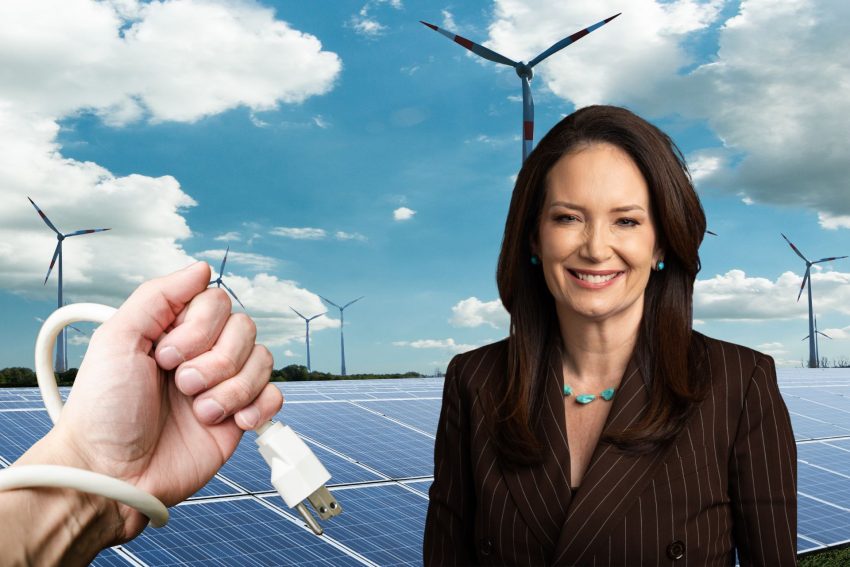In a move that’s being hailed as a breath of fresh air for farmers and rural communities, the U.S. Department of Agriculture has decided to stop subsidizing wind and solar projects on productive farmlands. Announced on August 19, 2025, by Agriculture Secretary Brooke Rollins, this policy shift ends federal loan support and grants that were funneling taxpayer dollars into sprawling renewable energy installations.
No more will vast stretches of America’s heartland be handed over to massive turbines and endless fields of panels, many of which are manufactured overseas in China. This is a huge win for rural folks who have watched their landscapes get transformed into industrial eyesores, all under the guise of progress. Instead of preserving the natural beauty of rolling fields and open skies, these projects have been scarring the land, and now, with subsidies cut off, there’s hope for a return to what makes rural America special: unspoiled vistas and productive soil dedicated to food, not foreign-made machinery.
Let’s be clear about why this decision matters so much. Wind turbines and solar farms aren’t just ugly; they come with a host of environmental drawbacks that outweigh any supposed benefits. For starters, wind turbines are notorious for harming wildlife. Birds and bats collide with the spinning blades in alarming numbers, leading to thousands of deaths each year. Migratory species get hit especially hard, disrupting ecosystems that have thrived for generations. Solar farms aren’t innocent either. They gobble up huge chunks of habitat, displacing animals and plants in deserts or fields that were once home to diverse wildlife.
And don’t forget the waste problem. Both technologies rely on materials that create hazardous byproducts during manufacturing and at the end of their life cycle, with limited recycling options for things like turbine blades or solar panel components, which often end up in landfills. These installations also alter local climates, with turbines changing wind patterns and solar arrays shading the ground in ways that mess with natural processes. It’s ironic how something pitched as environmentally friendly can leave such a messy footprint.
Then there’s the potential toll on human health, which has been a growing concern for people living near these projects. Wind turbines generate low-frequency noise and vibrations that can lead to sleep problems, headaches, irritability, and even anxiety for nearby residents. Studies have linked prolonged exposure to these sounds with stress and decreased quality of life, turning peaceful rural homes into zones of constant disturbance. Solar farms might seem quieter, but their construction and maintenance involve dust and chemicals that can affect air quality, and in some cases, they’ve been tied to outbreaks of illnesses like valley fever from disturbed soil. Families in rural areas deserve better than to have their well-being compromised by these industrial setups plunked down in their backyards.
Property values take a hit too, which is a big deal for landowners who rely on their homes and farms as their biggest assets. Research shows that homes within a mile of a commercial wind turbine can see their values drop by as much as 11 percent after the project is announced. Even just having turbines in the view can shave off about 1 percent from a property’s worth, and the effect worsens with more turbines or closer proximity. Solar farms aren’t far behind, with studies indicating that residential properties near large-scale sites lose around 4.8 percent in value on average, especially within a few miles. Who wants to buy a house with a sea of panels or whirring giants as the backdrop? This devaluation hurts rural economies, making it harder for families to sell or borrow against their land.
The damage doesn’t stop at the surface; these projects can wreak havoc on the soil itself, which is the lifeblood of farming. Solar panels cover the ground, reducing water absorption and altering temperatures, which leads to lower soil fertility over time. Construction compacts the earth, causing erosion and loss of topsoil, while materials like galvanized metal can leach zinc into the dirt, throwing off nutrient balances. In the Midwest, where solar is expanding, this is already stripping away rich farmlands that could be growing crops instead. Wind turbines require massive concrete foundations that disrupt soil structure permanently, making it tough to return the land to agriculture later.
On top of all that, wind and solar are far less efficient than proven alternatives, especially nuclear power, and they demand enormous amounts of space to produce meaningful energy. A single nuclear plant can generate reliable electricity with a footprint that’s 50 times smaller than what solar needs for the same output, and up to 360 times smaller than wind farms. Nuclear’s power density is around 1,000 watts per square meter, dwarfing solar’s 100 watts and wind’s measly 2-3 watts. These renewables are intermittent, depending on weather, while nuclear runs steadily, day and night. Why blanket productive land with inefficient tech when nuclear offers clean, compact energy without the sprawl?
At the end of the day, there’s nothing truly green about plastering the earth’s green spaces with these monstrosities. Rural America has dodged a bullet with the USDA’s smart move, protecting its heritage, health, and economy from further encroachment. It’s time to focus on sensible energy solutions that don’t sacrifice our landscapes for fleeting trends.


